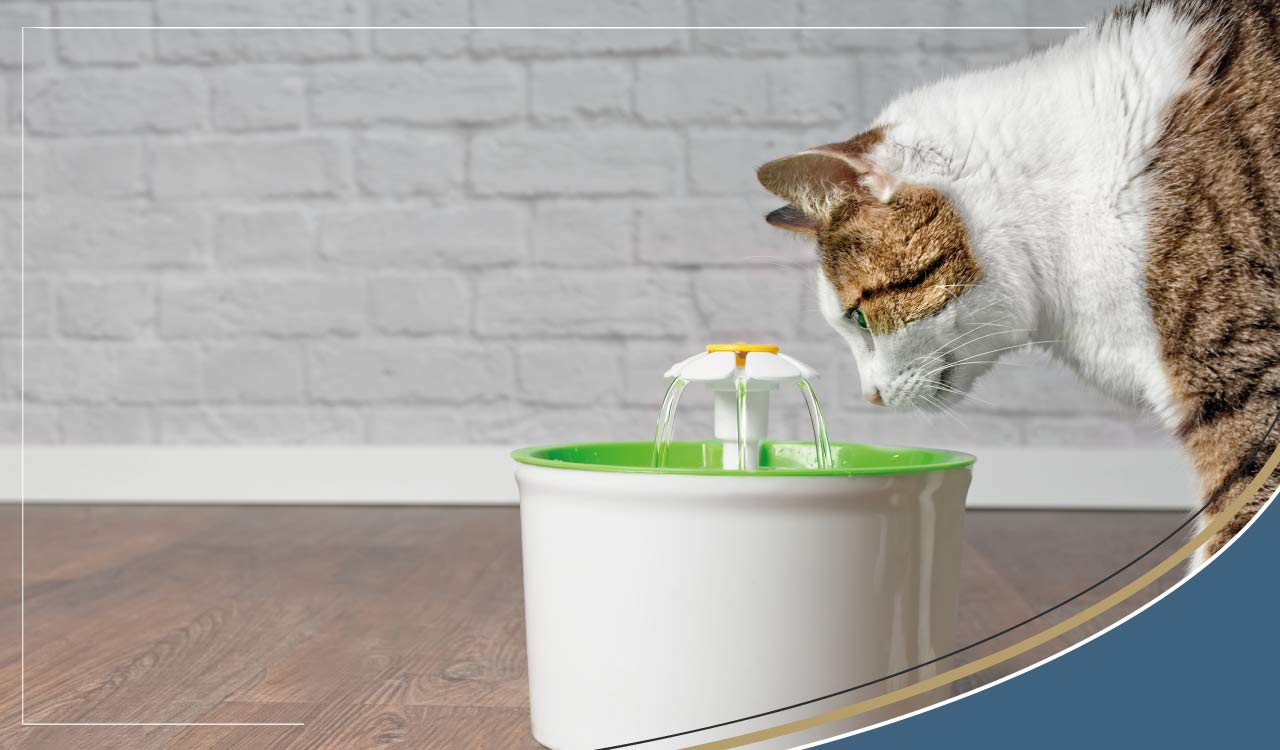Animals & Pets
Feline cystitis, symptoms, causes, prevention and treatment.
By Anna Sawkins
Feb 23, 2022

Feline Cystitis Symptoms
The following symptoms/behaviours can be indicative of your cat having Feline Urologic Syndrome (cystitis):
- Repeatedly visiting the litter tray
- Straining to urinate you may hear your cat crying at the litter box
- Only passing a few drops of urine at a time
- Suddenly stopping using the litter tray or urinating in other places around the house (periuria). -Your cat may choose hard cool places to urinate due to the irritation of their bladder wall
- Strong-smelling urine (there may also be blood present on testing)
- Over-grooming, particularly around the perineum.
If your cat is struggling to urinate, this can be very dangerous, so it is important that you take your cat to the vet immediately. If there is a complete blockage of urine, this is classed as a medical emergency (if blockage is not relieved within 48 hours, there is an extremely high risk of cats dying of kidney failure as toxins will be retained).
The vet may need to extract urine through a syringe placed in the bladder or to catheterise the cat immediately. Male cats are much more prone to this blockage due to their urethra being smaller leading to a build-up of crystals.
Causes of Feline Cystitis
- A diabetic cat can be more prone to cystitis due to higher levels of protein and glucose in the urine contributing to growth of bacteria in the urinary system.
- Feline Idiopathic Cystitis has similarities to Interstitial Cystitis in humans in that there can be repetitive bouts of the illness with unknown origin. This is often diagnosed when a number of tests rule out other reasons for the cystitis. Some factors that have been found to be in common amongst sufferers however are a:
- bladder lining that is not protected in the usual way against irritants, leading to ulceration, inflammation
- neurogenic inflammation nerves are stimulated by the brain through stress or by local damage to bladder lining to trigger neurotransmitters causing pain and inflammation
- stress (e.g. from noise, conflict with another cat, a new human in the house)
- Bacterial infection (problem can be exacerbated by cats not drinking enough water or holding onto urine for long periods due to not wishing to go out in the cold to urinate)
Urinary crystals/stones deposits of magnesium can build up blocking the urinary tract. Sometimes these contribute to cystitis and other times not (ultrasound and radiograph can show up the presence of these)
Preventing Feline Cystitis
- Encourage fluids make sure fresh water is always available, put water bowls in different places or provide a drinking fountain. If you can make the switch to tinned rather than dry food, please do, as dry food has been found to be a significant factor in cats becoming dehydrated. If your cat is too used to dry food to make the switch, you can add water to their dry food. A small amount of water can also be added to tinned food. Water bowls should be ceramic (low odour) and low-sided (so whiskers are not irritated and they can see around them). They should be placed away from noisy environments and the litter tray.
- Make sure there is one litter tray at least for each cat in your home.
- Try to decrease stress for your cat - give them space, access to outdoors, toys and play, and places to climb/hide.
Treating Feline Cystitis
- A culture and sensitivity test will give information as to whether your cat has an infection and if so which antibiotic it would respond to. Unfortunately, many cats are sometimes given full-spectrum antibiotics when there may not be any infection present at all. This promotes bacterial resistance and continued long-term pain and distress.
- D-Mannose is an all-natural and safe product which attaches to bacteria and flushes it away. It provides both short-term relief by attaching to E.coli and removing them from the body and, when used prophylactically, is successful in preventing the reoccurrence of problems.
Please see your vet if problems persist.
 Free Shipping on orders $100+ CAD
Free Shipping on orders $100+ CAD
 Worldwide Delivery Available
Worldwide Delivery Available
 Rated 4.9 out of 5 on Trustpilot
Rated 4.9 out of 5 on Trustpilot

















